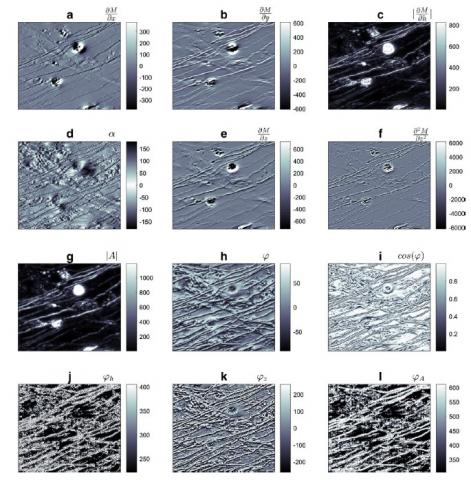P. Núñez‑Demarco, A. Bonilla, L. Sánchez‑Bettucci, C. Prezzi
2 022
Surveys in Geophysics Published: 15 December 2022 Volume 44, pages 603–664
Potential field filters are widely used in exploration and interpretation of geologic structures,
archaeological sites, hazards assessment, and in engineering and environmental studies. There are countless filters and attributes and their number keeps growing: directional, horizontal and vertical derivatives; analytic, monogenic and direct analytic signals; modules; local phase; tilt angle; azimuth; local (horizontal, vertical and total) wavenumbers; theta function; high order derivatives; enhancements; normalizations. Furthermore, almost all of these filters can be applied to other filters—often named with overwhelming acronym combinations making it almost impossible to keep up with the particular and general development of this field. In this work, we present a review of more than 200 publications
and compile more than 50 proposed methods in a unified mathematical framework, and an easy-to-follow notation. We asses all the methods, their definitions, connections, variations, redundancies and limitations, including a vast list of references and some historical notes. We improve and amend some points—regarding not only its mathematical applications but also the attributions that correspond to each method. We also establish connections with other fields of research—seismics, mathematics, image analysis—in which the same or similar techniques are used, but have remained isolated and unknown to each other.
archaeological sites, hazards assessment, and in engineering and environmental studies. There are countless filters and attributes and their number keeps growing: directional, horizontal and vertical derivatives; analytic, monogenic and direct analytic signals; modules; local phase; tilt angle; azimuth; local (horizontal, vertical and total) wavenumbers; theta function; high order derivatives; enhancements; normalizations. Furthermore, almost all of these filters can be applied to other filters—often named with overwhelming acronym combinations making it almost impossible to keep up with the particular and general development of this field. In this work, we present a review of more than 200 publications
and compile more than 50 proposed methods in a unified mathematical framework, and an easy-to-follow notation. We asses all the methods, their definitions, connections, variations, redundancies and limitations, including a vast list of references and some historical notes. We improve and amend some points—regarding not only its mathematical applications but also the attributions that correspond to each method. We also establish connections with other fields of research—seismics, mathematics, image analysis—in which the same or similar techniques are used, but have remained isolated and unknown to each other.

